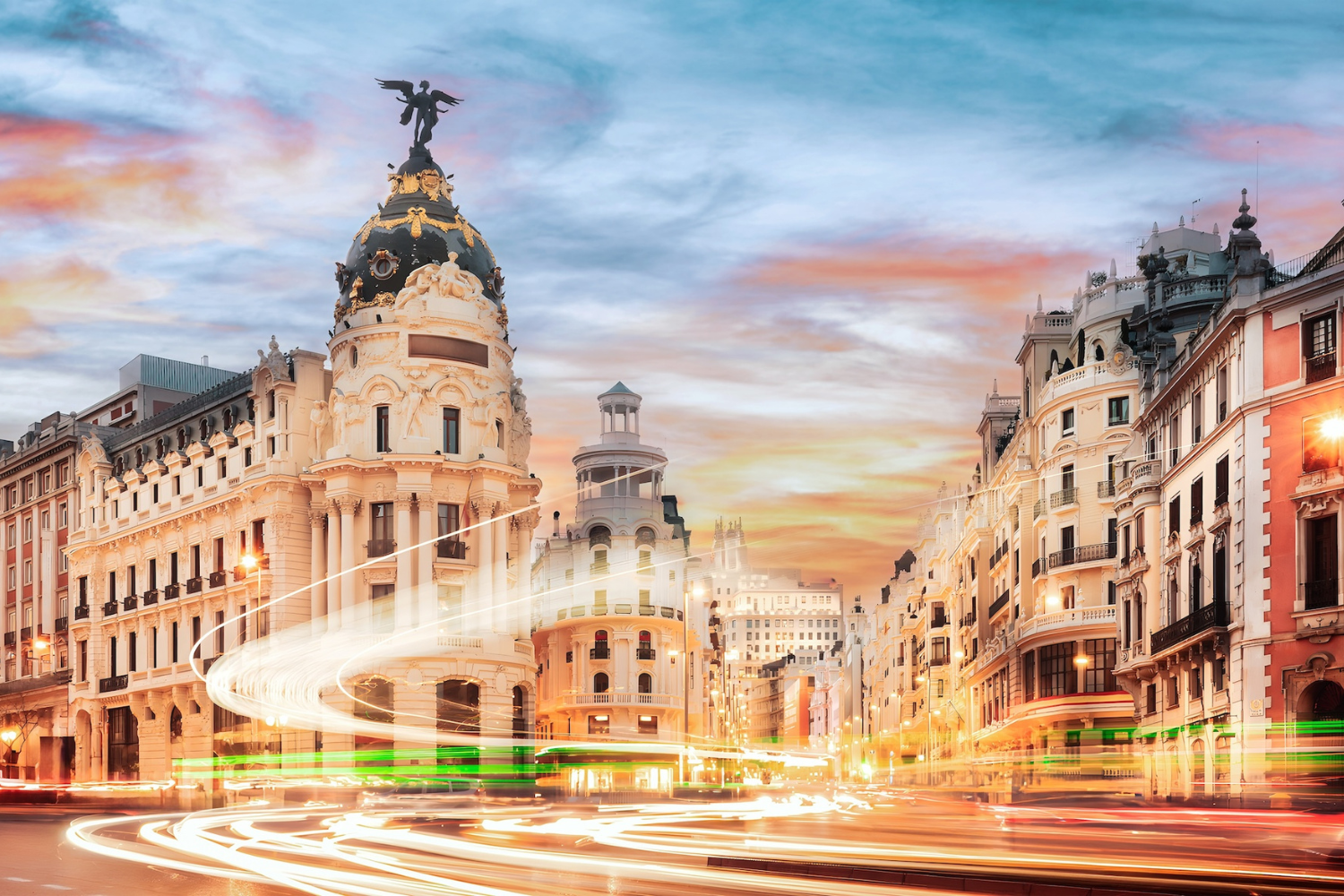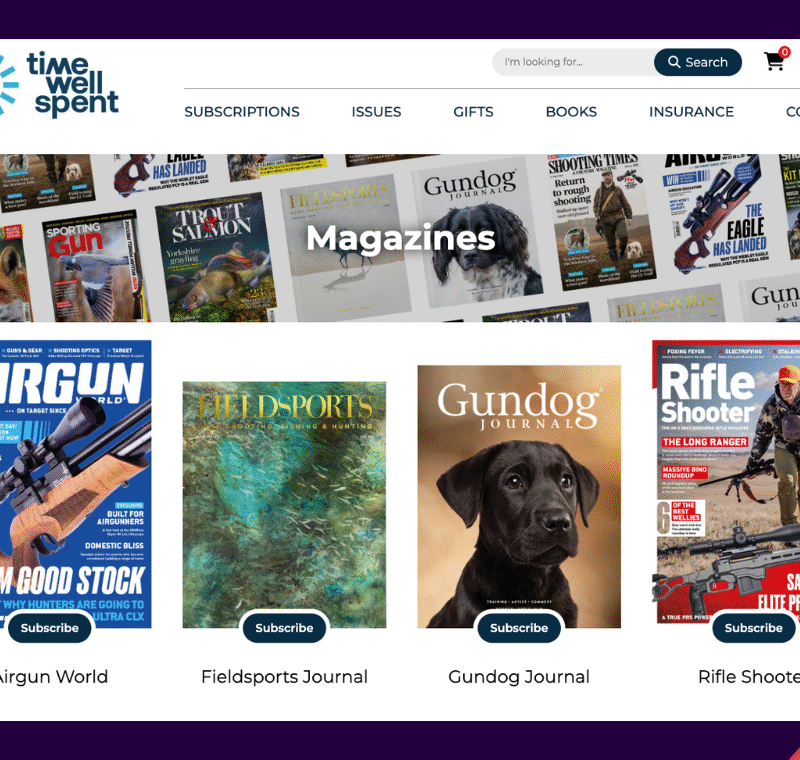Cover star: Time’s creative director D.W. Pine on being in charge of the most important real estate in journalism
He’s put Elon Musk behind the Resolute Desk, melted Donald Trump’s head and launched almost a thousand drones for a photo shoot. During a remarkable career spanning 27 years, Time’s creative director D.W. Pine has broken many a barrier with his cover designs – making good use of what has been described as ‘the most important real estate in journalism’.
This month marks a significant milestone along Pine’s career path – his 1,000th cover for Time. And in line with so much of his work, the 14 April edition is fronted by a simple but effective image. Behind the coverline ‘The Endgame’ it shows Ukrainian President Volodymyr Zelensky perching on the edge of his desk in his office in Kyiv shortly after his notorious recent trip to the White House and with the war with Russia seemingly building to a climax.

“We initially went down a more illustrative, conceptional path for the cover,” explains Pine. “Zelensky obviously has a lot going on in the world, but he was able to grant us an interview and photoshoot, so that changed things.
“With the cover we always try to treat things with respect, clarity and simplicity. We’re inundated with millions of images every single day so for Time to break through that clutter, I generally try to think more about what I don’t want to put on the cover than what I do put on the cover.
“A lot of the process between the team is like: OK, do we really need that? Do we need to say this? A lot of the work that goes into putting the cover together is trying to create a simple, impactful image that generates enough interest and breaks through the madness of the visuals we all get.”
The art of provocation
One recent Time cover that cut through the clutter and then some featured Tesla boss and de facto head of the Department of Government Efficiency (DOGE), Elon Musk, sitting in President Donald Trump’s seat behind the Resolute Desk in the White House.
In one image, Pine summed up the ongoing debate surrounding Musk’s influence on the world’s most powerful man. The cover went viral and prompted a reaction from Trump – the President, when asked about it by a journalist, saying he didn’t realise Time was still in business.

“The President of the United States commenting on a cover is certainly a measure of virality,” says Pine with a smile. “But we don’t set out on a mission to create a ‘provocative’ cover. I think we’re successful at times in doing that because we do all the other things.
“We cover world leaders, CEOs and celebrities who might not be controversial. They are certainly important, but not something that will make you say: Oh my God. I can’t believe they put that person on the cover. So, we pick our spots. And even then you don’t know what covers are going to resonate with people. That kind of emotional response is different for everybody.”
Time’s ability to strike a chord with its covers is aided by what Pine calls “the beauty of time”. In a fast-moving news cycle, the magazine has the luxury of stepping back, digesting an issue and coming up with a measured response.
“We have that ability to say, OK, let’s take a breath and really craft how we want to do it,” Pine says. “People have become very adept at reading visuals. With the Elon cover we were able to capture, with no words at all, what was written about him taking over and DOGE for a month or two months.
“We are given the benefit of taking a little bit of a break to look at things. And I think readers want that. Being able to sit back and create that space to think is important. It’s a good role for Time to play.”
The changing face of magazines
While Pine is best known for his print covers – including the famous Time Person of the Year editions – the artistic director has also excelled in the digital space. He took the lead in 2014 when Time started to publish a weekly animated cover for its more than 60 million social media followers.

Working with designers at Brobel Design, Pine has come up with a series of striking, witty covers including the White House morphing into the Kremlin, Trump literally having a meltdown and the Time cover being pulled tight by a tape measure.
“I was looking at ways to push covers in a new direction and with the advent of social media, it was a case of – why don’t we make something move?” says Pine. “We’ve now done 300 of them and they are amazing. I give Brodel Design the 2D flat file and within hours they have added they’re own special sauce to it.
“Animated covers have really opened us up to a whole new audience. It’s similar to what our events and documentaries do. It is still Time spread across all these different types of platforms. All that trust, legacy and reporting still goes into every single path that we take.
“Nowadays when I’m looking at that blank canvas on my screen, which can be daunting, I’m thinking about it more digitally. I mean, I’ve got like, what, three seconds of your time with everything that is being thrown at you? So, simplicity is the number one priority.”
While more people read Time digitally, the printed version of the magazine still remains extremely important.
“Print creates this end product. It’s like when you finish a book, you feel like you have accomplished something,” says Pine. “I can close this page and then I’m on to the next thing. It might sound old school, but it’s the same with magazines. There’s a period at the end. Neither you nor I will ever read the entire Internet, so there’s no finality to it, no accomplishment. It’s nice to be able to get that with a magazine.
“And the subjects that we cover, the people that we put on the cover, it’s important to them that we print it. Even though the magazine is shared online, people who are on the cover, even world leaders, want a print copy. They want to hold it and maybe frame it. There’s something about that tangible product quality that’s important to them.”

When it comes putting together a cover, Pine has to adhere to some consistent guidelines. Time’s printed cover size is 8 x 10.5 inches, while the magazine’s logo has remained pretty much the same since the 1990s. Then there’s that signature red border symbolising that everything covered inside the frame is worth knowing.
“The red border is a blessing and a curse,” Pine points out. “I found that when I can limit myself – whether that’s the 8 x 10.5 inch space or the fact that I only use two fonts and the colours black, red and white – I can put that design part of it aside and I think more about what we want to say and how we’re going to say it visually. So that’s freed me up.
“On the other hand, as a designer, the red colour is a lot. It takes over imagery. It’s very powerful so you don’t really want to overpower the content. What I’ve done over the last five or six years is create a little bit more of a white border between the image and red border just to separate that vibrating aspect of it.
“But even with these restraints, I still push and pull the brand. I’ve changed the logo from Time to Vote, to implore people to vote, and have changed the colour of the border a couple of times. I play with the restrictions a little bit.”
Pine has certainly not been afraid to push the boundaries when it comes to cover design. He has made cover images from sand, fire and water, used an image of a breastfeeding mom, and launched 958 drones into the sky, each emitting a shade of red, to create the largest Time cover in history.
While inspiration for the designs can strike Pine at any time – “it could happen at night, it could happen taking a shower, it could happen while I’m talking to you” – he stresses the importance of the cover being a collaborative effort from the Time team.
“There’s no way I could come up with every idea, so you really have to rely on each other,” he adds. “We have a ton of different voices at the table, probably even more so than we used to, and that includes photographers whose work captures what you would consider to be a younger audience. Ideas do come from all different types of places, and you have to be open to them.”
Ask Pine about his own favourite Time cover and he picks an illustration by Boris Artzybasheff done in 1950 showing Coca Cola taking over the world, which he loves so much, he has a framed copy hanging in his office.

“I’ve always loved that one just for its simplicity,” he says. “I have learned from that. “When it comes to my favourite covers that I did, I would say the Trump meltdown one and the ‘Are You Mom Enough?’ one we did on parenting.
“I’m also very proud of putting Bibi Aisha – the 18-year-old Afghan woman whose nose was cut off by the Taliban – on the cover. That was really difficult to look at, but massively important to show what was going on.”
Not letting AI loose
As Pine eyes up the next 1,000 Time covers, the spectre of artificial intelligence looms large. There are an increasing number of AI tools that could make his job, and that of the talent he works with, a lot easier – so where do you draw the line?
“I have an open mind about AI, but I’m in the business of hiring actual artist and actual photographers to help us collaborate to do the work that we do to create the visuals,” says Pine. “I will always be in that business.
“I see AI as a paintbrush. If an artist wants to work with AI to create an image, sure. That’s just their medium. But I still want the person. It would have been easy for me to say: Hey prompt, give me Elon Musk sitting behind the Resolute Desk and it probably comes up with 1,000 of them and we’re done. But I still find the value in really showcasing humans on the cover.”

FIPP WORLD MEDIA CONGRESS 2025
An unforgettable gathering that will shape the future of media.
Join us in Madrid, Spain, from 21-23 October 2025.
As the interview comes to a close, I ask Pine to share words of advice to those wanting to follow in his footsteps. “I’ve always found that it’s important to to say ‘yes’ even if you have no clue how to do it,” he says.
“I’ll never forget hiring Megan Caponetto – a studio designer – to do a stained glass portrait of Mitt Romney when he was becoming a candidate for President, and we were talking about his Mormon faith. She said, ‘Yeah I can create a stained glass’. She did and it looked great. I didn’t find out till later on that she had never done that her whole life and watched YouTube videos on how to make stained glass windows.
“That always struck me and it’s how I’ve always done it too. You can do anything. It might not be a path that everyone takes, but always be willing to do things. Also, I’ve noticed it’s the people who are willing to do the work that no-one else wants to do, like writing all the captions, that progress and move up. Always be willing to roll up your sleeves and hop in.”










